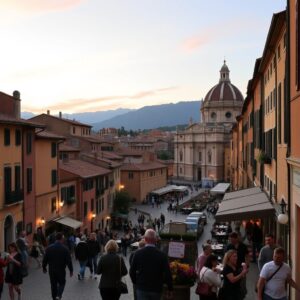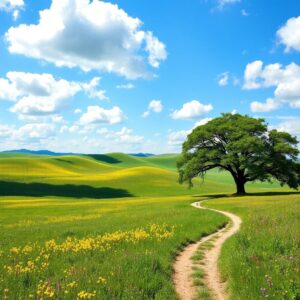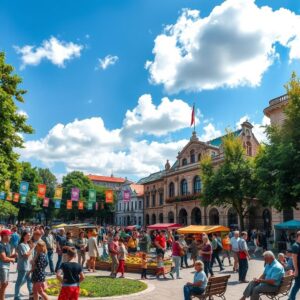
Explore & Play
Discover interesting topics and solve the accompanying crossword puzzle.
African crossword: Exploring Africa’s Sahara and Kilimanjaro
Table of Contents
African crossword
You can either fill in the crossword puzzle directly on this page or click the button in the bottom right corner to print it for free.
——————————————
Exploring Africa: From the Sahara Desert to Mount Kilimanjaro and Beyond
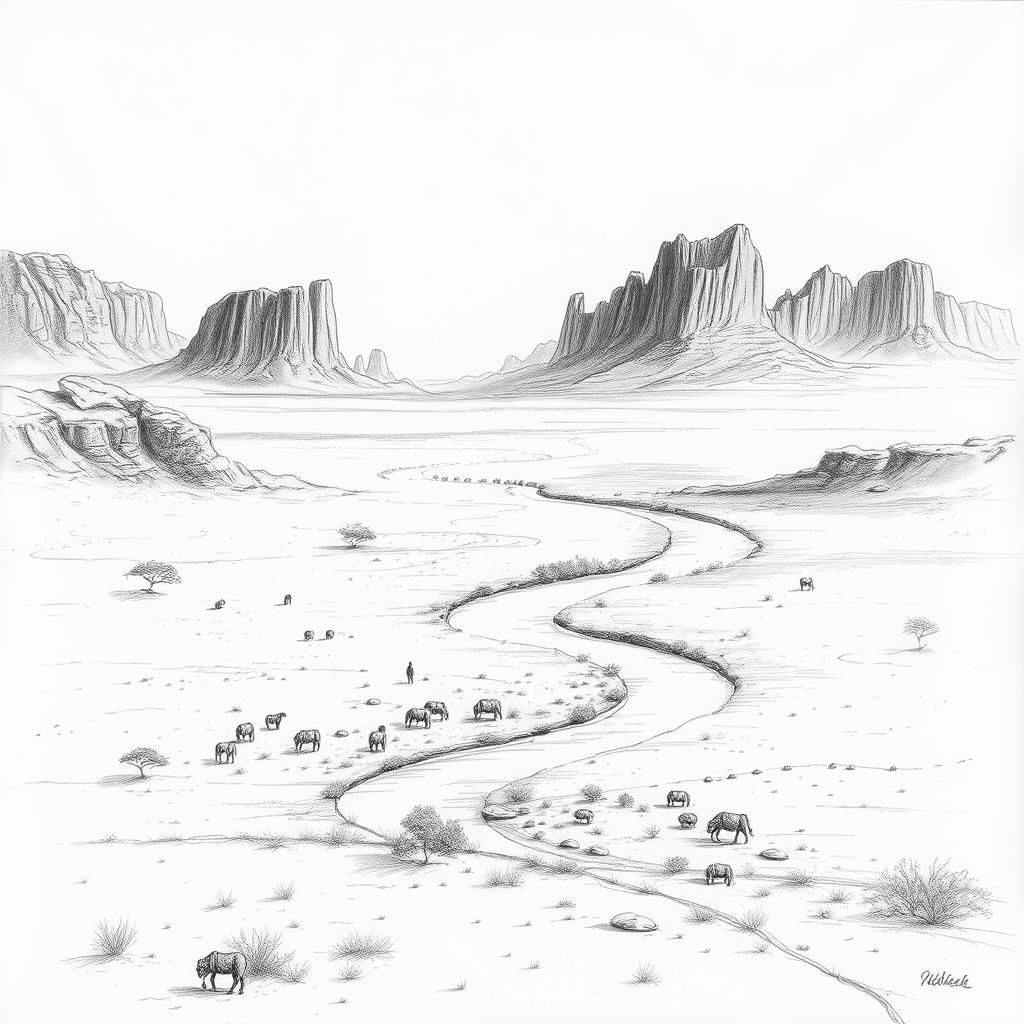
Introduction
Picture a continent where endless deserts meet towering peaks, where ancient rivers carve life through vast savannas, and where vibrant cultures hum in every village and city. Africa is not just a place on the map—it’s a sprawling mosaic of landscapes and stories, each more compelling than the last. From the blazing sands of the Sahara to the misty heights of Kilimanjaro, African lands pulse with a richness that draws travelers and dreamers alike.
This article invites you to journey across Africa’s diverse terrains and meet the people whose lives are intertwined with this extraordinary geography. Along the way, you’ll encounter the resilience of desert dwellers, the majesty of wildlife roaming open plains, the timeless flow of the Nile, and the colorful tapestry of cultures that shape this great continent today. Together, we’ll explore what makes African landscapes and heritage not just remarkable, but deeply human—and why they continue to inspire wonder across generations.
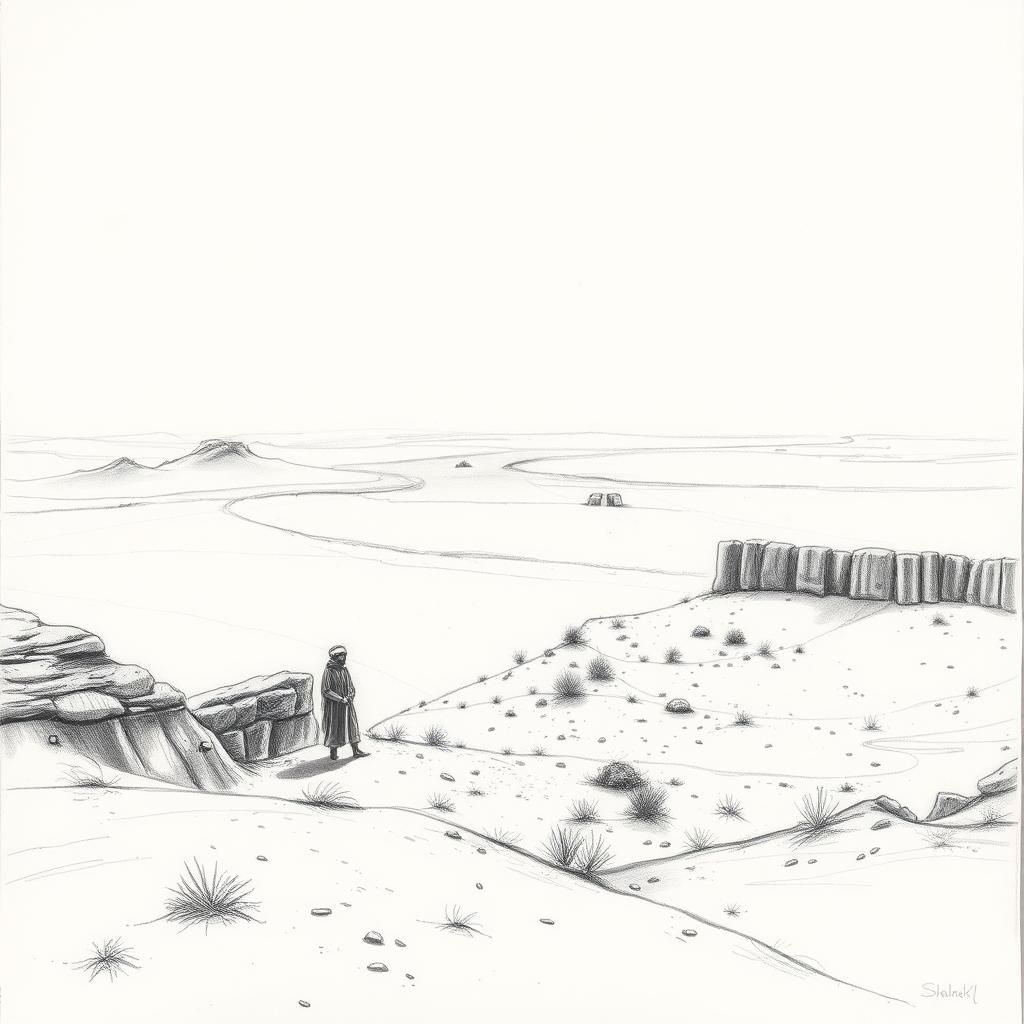
The Sahara Desert: Africa’s Vast and Harsh Frontier
Step into the Sahara, and you’re met with a landscape that seems to stretch into forever—a sea of rolling sand dunes, jagged rocky plateaus, and vast salt flats shimmering under a relentless sun. This isn’t just any desert; it’s the largest hot desert on Earth, spanning an astonishing 11 countries across northern Africa. From the dusty edges of Morocco all the way to the fringes of Sudan, the Sahara is a world both brutal and breathtaking.
Life here is far from easy, shaped by extremes: scorching daytime heat that can climb well above 50°C, bitter cold nights, and near-constant dryness. Yet, nestled within this harsh wilderness are over 2.5 million people—nomads, traders, and desert dwellers—whose lives have adapted to this formidable environment over centuries. The Tuareg, often called the “blue people” for their indigo robes that stain their skin, traverse the endless dunes on camels, guided by the stars and an intimate knowledge of the land. They’ve crafted ingenious survival strategies: conserving water, reading subtle signs in the landscape, and building shelters that shield them from the blistering sun and sandstorms.
Beyond human resilience, the Sahara hides pockets of life that defy expectation. Date palms cluster around oases like shimmering gems, providing shade and sustenance. Hardy flora like acacias and desert grasses cling to survival, while animals such as the fennec fox—with its enormous ears that catch whispers of sound—and the dromedary camel, perfectly designed for desert travel, tell a story of adaptation and endurance. Even the shifting sands hold secrets: ancient rock art and fossilized remains speak to a time when the Sahara was a lush, green paradise.
The desert isn’t just a barren wasteland; it is a fascinating ecosystem, a crossroads of cultures, and a living testament to the strength of life against the odds. Standing amid its vastness, you realize the Sahara is less a place to conquer and more a world to respect—one that shapes the soul and ignites the imagination.
Source citation: Finding Dulcinea
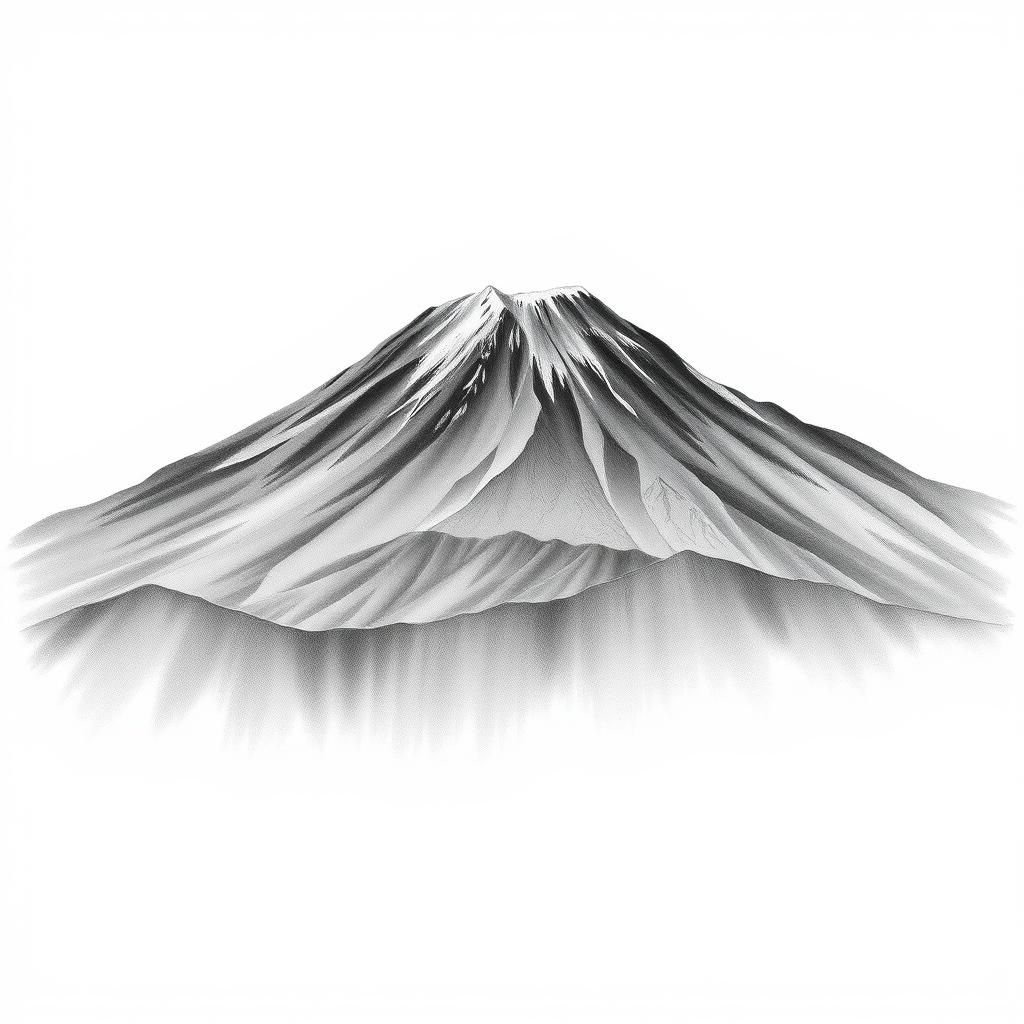
Mount Kilimanjaro: Africa’s Majestic Peak
Rising sharply from the Tanzanian plains, Mount Kilimanjaro stands as Africa’s tallest sentinel at 5,895 meters. This colossal mountain is not just a geological marvel; it’s a beacon intertwined with the continent’s identity. Its snow-capped summit—the “Roof of Africa”—pierces the sky, a rare spectacle on the equator.
In 2025, Kilimanjaro made headlines when the second oldest climber ever reached its summit, proving the mountain’s enduring draw to adventurers of all ages. Each year, thousands follow its trails, eager to conquer its rugged paths and experience the shifting ecosystems stacked like pages—from lush rainforests at the base, through heath and moorland, up to the alpine desert near the peak.
Beyond its physical grandeur, Kilimanjaro holds deep cultural significance for Tanzania’s communities. The Chagga people, who live on its lower slopes, regard the mountain as a sacred source of water and life. The rhythms of daily life are still shaped by the mountain’s presence—from farming cycles nourished by its rains to stories that echo its timeless majesty.
Ecologically, Kilimanjaro is a complex mosaic. Its glaciers, though slowly retreating under climate pressures, feed rivers that sustain countless animals and farmers alike. The mountain’s biodiversity — from tropical birds to elusive colobus monkeys — serves as a small but critical refuge amid changing landscapes.
Whether you see Kilimanjaro as a challenge to climb or a symbol to admire from afar, it reminds us how Africa’s natural wonders pulse with life, history, and hope.
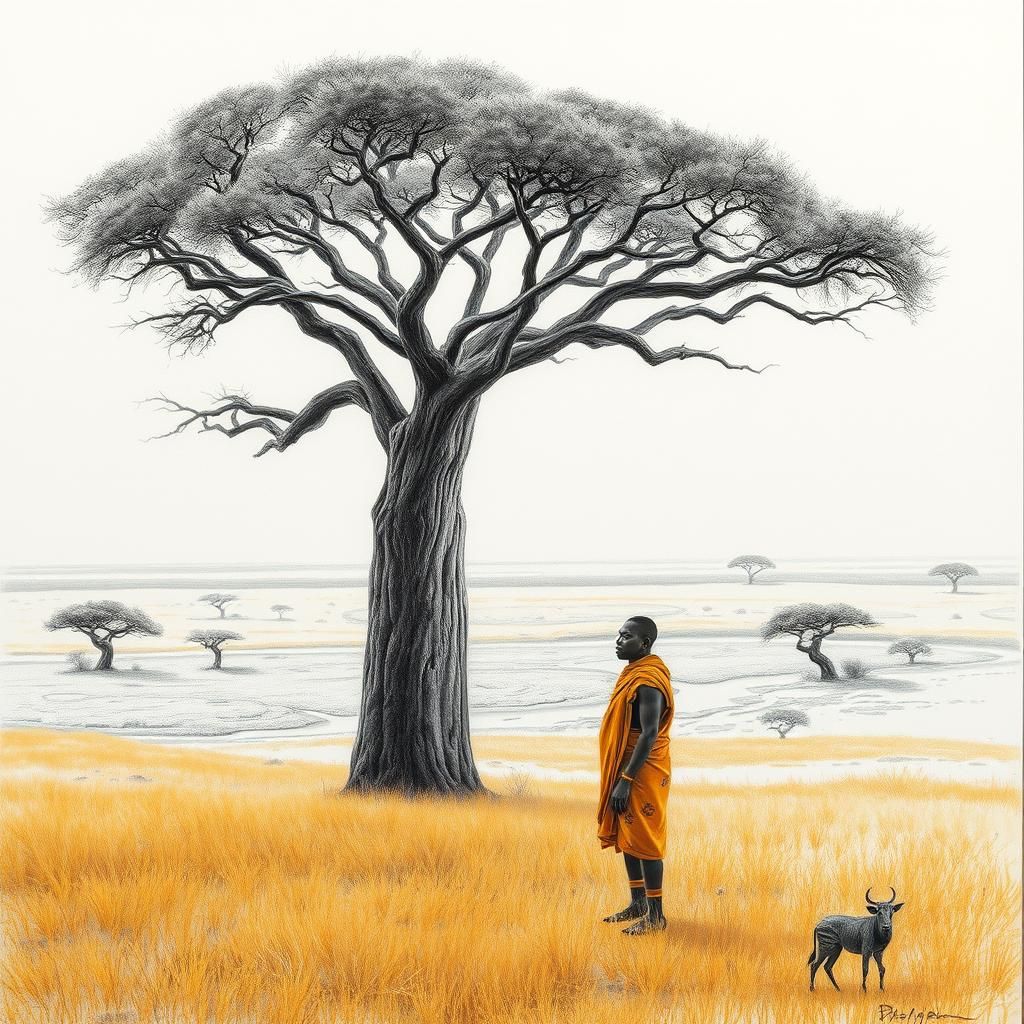
The African Savanna: Home to Wildlife and Warriors
Step into the vast openness of the African savanna, where golden grasses ripple under a wide, endless sky, and the air hums with life. This landscape is both wild and inviting—home to a breathtaking diversity of creatures and cultures that have thrived here for centuries.
The savanna stretches across much of sub-Saharan Africa, a patchwork of tall grasses, scattered acacia trees, and winding rivers. It’s a place where nature’s rhythms dictate the lives of all who inhabit it. Here, elephants lumber through thickets, lions lounge in the midday heat, and herds of wildebeest move like waves across the horizon. The savanna is not just a backdrop; it’s a living ecosystem buzzing with intricate connections—predators, prey, birds, insects—all playing their roles in a dramatic feast for the senses.
For the Maasai people, the savanna is far more than a landscape. It’s their home, their identity, woven into every ritual and story. Known as fierce warriors and skilled cattle herders, the Maasai have adapted to this environment with resilience and deep respect for the land. Imagine a Maasai elder recounting tales of hunts and survival beneath an enormous baobab tree while the sun sets in fiery hues. Their brightly colored shúkà cloths flutter in the wind, a vivid contrast to the earthy tones of the earth—a living link between past and present.
Travelers who venture into the savanna often come away changed. The raw beauty calls forth a kind of quiet reverence—watching a lioness stalk her cubs, hearing the distant roar of thunder signaling a rainstorm, feeling the dust settle after a herd has passed. Safari is not just about sightings; it’s about connection, a momentary brush with the wild that shifts your perspective.
Places like Victoria Falls, just a short journey away, offer another glimpse into Africa’s grandeur—where water thunders over cliffs, mist sprays into rainbows, and the visceral power of nature stirs something ancient within us all. Conservation efforts across the savanna speak to a shared hope: that these places, and the lives they support, endure for generations to come.
So, whether you walk with the Maasai, track wildlife across the plains, or simply sit quietly and listen, the savanna offers not just a journey through space, but a passage through time—a reminder that life here, in all its forms, carries stories as old as the earth itself.
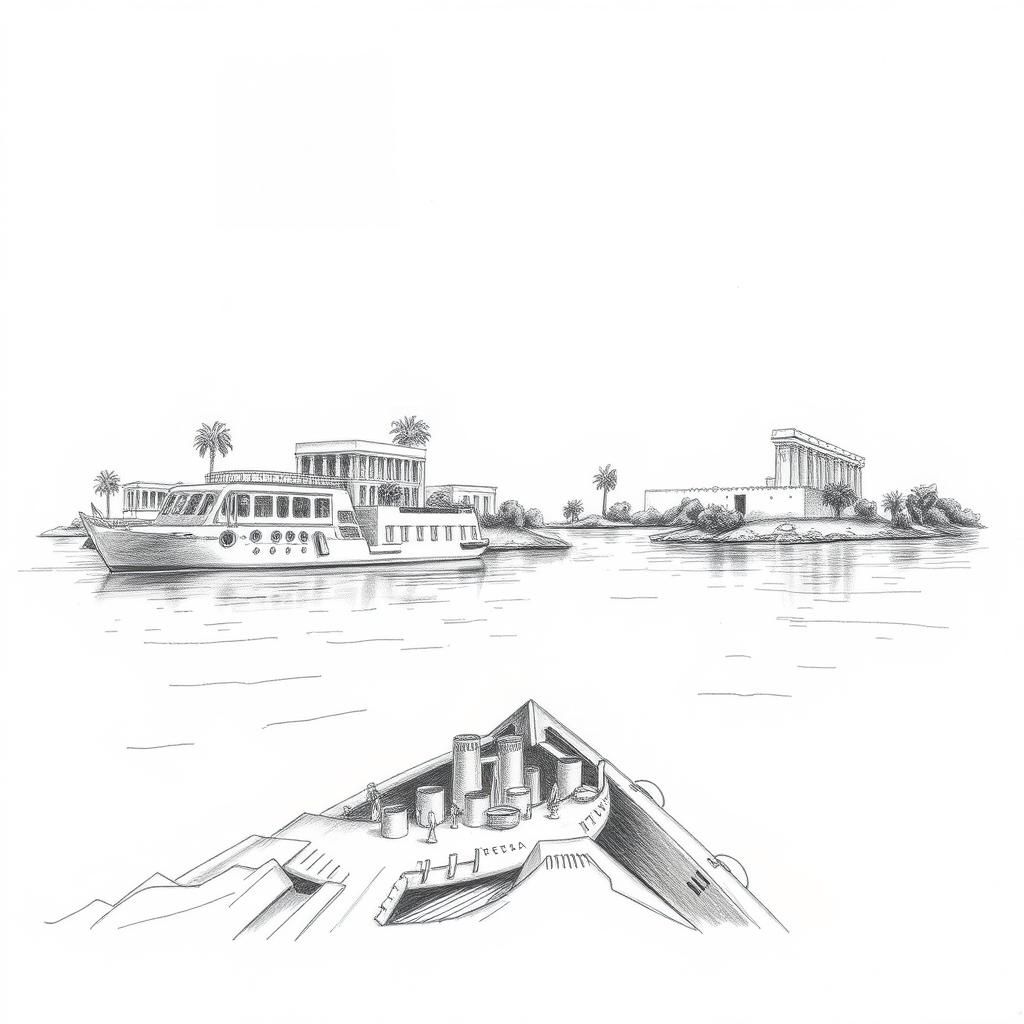
The Nile and Tourism in Egypt: Timeless and Thriving
Flowing over 6,600 kilometers, the Nile River is the lifeblood of northeastern Africa—a ribbon of water that has nurtured civilizations for millennia. From its distant sources in the heart of the continent, the Nile courses northward, carving a fertile path through desert landscapes that would otherwise be uninhabitable. It’s here, along these banks, that ancient Egypt blossomed, its temples and pyramids whispering stories of pharaohs and gods. The river’s steady pulse remains a powerful symbol of continuity and change, binding past to present.
Today, the Nile continues to draw travelers seeking more than just scenic vistas. In 2025, Egypt’s tourism scene along the Nile hums with cautious optimism. Experts emphasize that river cruises are safer than ever, buoyed by strengthened security measures and a resurgence in international interest. Tourists glide gently past timeless ruins, vibrant local markets, and lush riverbanks teeming with life, all under the watchful sun. The gentle sway of the cruiser becomes a moving lens, inviting visitors to see Egypt’s unbroken relationship with its most vital waterway.
Yet, beyond the postcards lies Cairo—the city where myth and modernity collide. Often painted as chaotic or overwhelming, Cairo is, in truth, a bustling metropolis with layers of history coexisting alongside contemporary life. Misconceptions about the city miss its texture: the fragrant spice markets, the call to prayer echoing over rooftops, the laughter spilling from cafes. Here, ancient stones meet the rhythms of daily hustle, challenging stereotypes and inviting visitors to look deeper.
The Nile’s timeless presence is more than a geographical fact; it’s an enduring narrative of human resilience, cultural richness, and the ongoing dialogue between nature and civilization. As you stand on its banks or drift along its currents, you’re not just a spectator—you become part of a story as old as time itself.
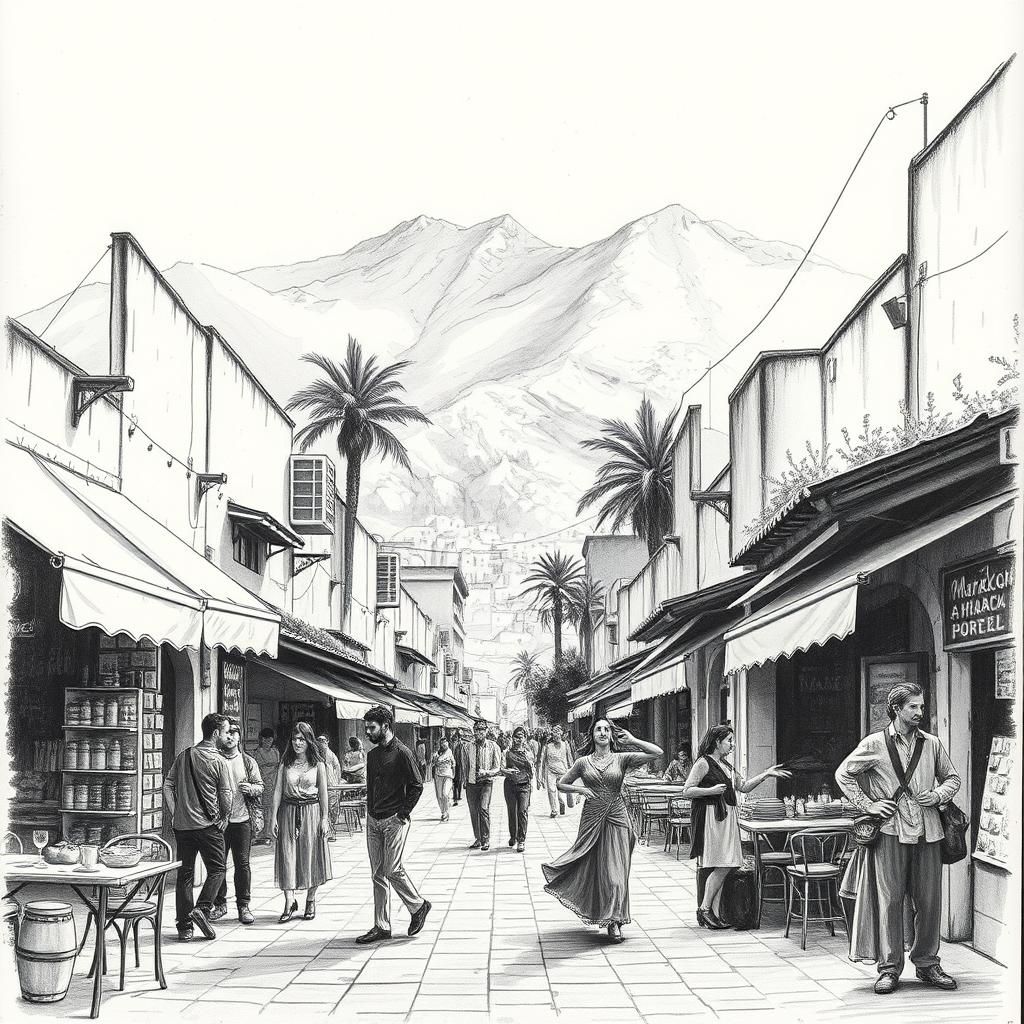
Morocco’s Cultural Tapestry: From Marrakech to the Atlas Mountains
Step into Marrakech, and you immediately feel the pulse of a city where centuries collide with the now. The air is thick with spices—cumin, saffron, freshly ground cinnamon—mingling with the call of street vendors and the clatter of bustling souks. Yet, beneath this vibrant surface, some stories don’t quite match the reality. Take belly dancing, for example. It’s often painted as a quintessential Moroccan tradition, but the truth is more nuanced. Belly dancing has roots across the Middle East and North Africa, but in Morocco, it’s less a widespread cultural practice and more a performance art shaped by tourism’s spotlight. Locals tend to reserve their dances for weddings and family gatherings, where rhythms and moves differ from the sensationalized versions in tourist shows.
Marrakech today is a living mosaic. Alongside age-old palaces and riads, modern cafés and art galleries hum with creativity. Visitors wander through the labyrinthine medina, discovering hidden courtyards where history whispers from mosaic tiles and carved wood. The city’s myths might blur some lines, but its authentic spirit shines through in music, food, and the warm welcomes of its people.
Just a short journey away, the Atlas Mountains rise like ancient sentinels, their rugged peaks threading through the sky. These mountains shape not just the landscape but the lives of the communities nestled in their folds. Their rocky ridges and deep valleys tell stories of endurance—where Berber villages maintain traditions forged over millennia. Hiking here is more than a trek—it’s a dialogue with the land itself: feeling the crunch of earth beneath boots, hearing the murmur of mountain streams, and breathing in the crisp, pine-scented air.
The Atlas is no easy place. Terrain shifts sharply—from rocky summits to terraced fields shaped by human hands. This challenge has forged a way of life that’s both resilient and resourceful. Adventure travelers come seeking thrills and views, but what stays with many is the quiet strength of local communities, whose customs and hospitality remain deeply rooted despite the growing allure of tourism.
Together, Marrakech and the Atlas Mountains offer a glimpse of Morocco beyond the postcards—a rich cultural tapestry woven from history, myth, and living tradition. Here, every street, every trail, invites curiosity and respect, reminding visitors to look past the surface and listen closely to the stories the land and its people have carried through time.

Kenya: Wildlife, People, and Natural Wonders
Step onto the sunbaked plains of Kenya, and you’re immediately wrapped in a landscape that feels both ancient and alive. With over 55 million people calling this place home, Kenya is more than just a vast stretch of savanna—it’s a vibrant mosaic where nature and culture intersect in powerful ways.
The country’s ecosystems range from sprawling grasslands to dense forests and even semi-arid zones, each sheltering an extraordinary variety of wildlife. Think of the iconic Maasai Mara, where the great migration paints the horizon with herds of wildebeest and zebra—a spectacle that pulls visitors from every corner of the globe. These national parks don’t just serve as tourist destinations; they’re crucial habitats protected through dedicated conservation efforts, preserving biodiversity and balancing the needs of wildlife with those of local communities.
Kenya’s human story is just as compelling. The Maasai people, known as warriors and pastoralists, are deeply connected to the land and its rhythms. Their vibrant attire, oral histories, and traditional ceremonies offer more than cultural pageantry—they are living threads connecting past and present. Travelers lucky enough to share moments with Maasai communities often describe a profound sense of respect and understanding, an invitation to see the world through a different lens.
In Kenya, every sunrise spills stories—from the cries of vultures circling overhead to the quiet resilience of people shaping their futures amid shifting landscapes. It’s a place where nature’s grandeur humbles you, and human spirit shines strong, intact, and grounded in the wild.
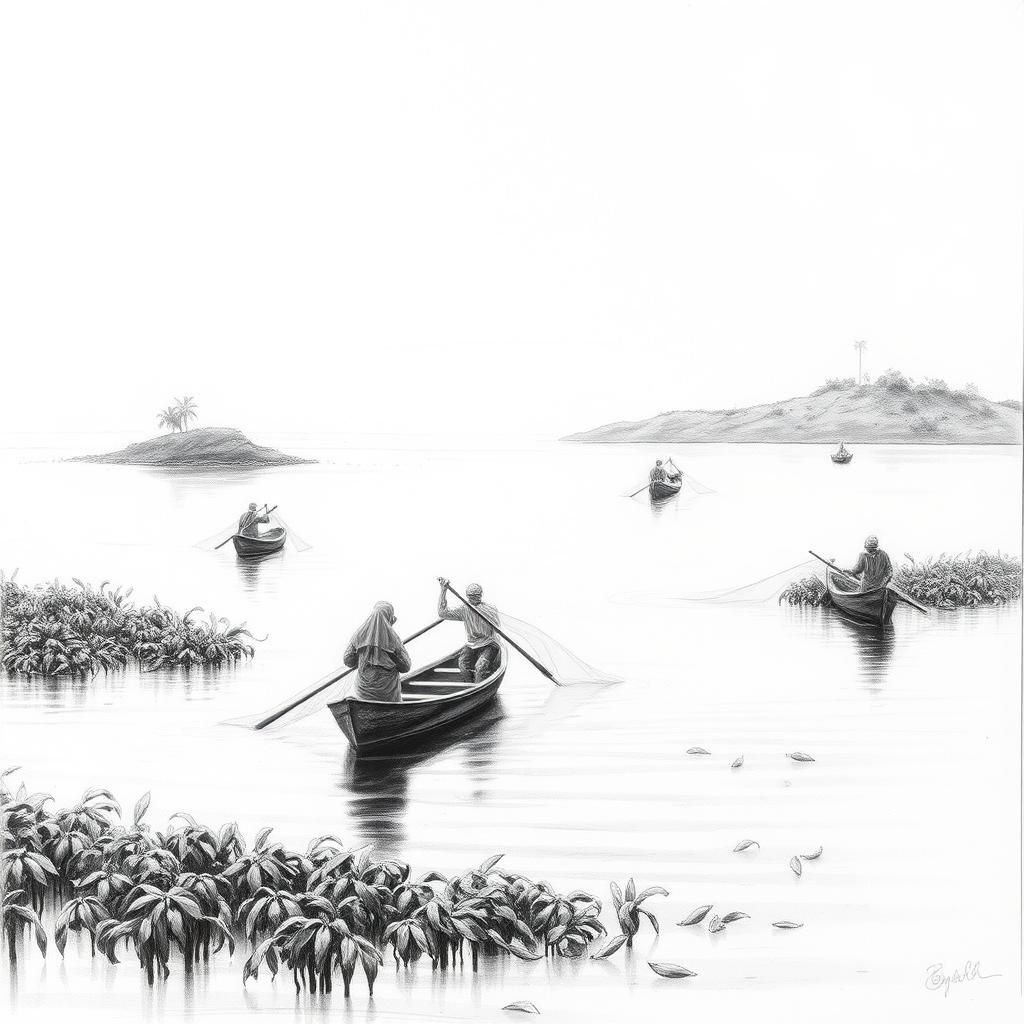
Lake Victoria sits like a vast, shimmering jewel at the heart of East Africa—a freshwater giant spanning Uganda, Kenya, and Tanzania. Covering nearly 70,000 square kilometers, it’s the largest lake on the continent and pulses with life. For roughly 47 million people living along its shores, the lake isn’t just water; it’s the wellspring of their daily existence—fueling fishing communities, providing drinking water, and supporting far-reaching ecosystems that ripple through the region.
Imagine early morning mist lifting off the calm surface, revealing fishing boats silhouetted against the dawn. Nets dip gracefully, pulled up heavy with tilapia and Nile perch—the lake’s iconic catch. These fish not only feed families but connect generations through tradition and trade, weaving a living story of resilience and adaptation.
But beneath this beauty lies a fragile balance. Decades of overfishing, invasive species like the water hyacinth choking waterways, and pollution threaten Lake Victoria’s future. Yet, as of 2025, a hopeful narrative is unfolding. Governments, local communities, and international partners are rolling up their sleeves together—launching restoration projects that blend science with local knowledge. They’re clearing invasive plants, promoting sustainable fishing practices, and nurturing biodiversity hotspots to revive this vital lifeline.
What’s especially inspiring is how eco-tourism is blossoming around these efforts. Visitors can now explore untouched islands, witness bird colonies, and engage with communities whose lives are intricately tied to the lake’s health. This not only brings economic opportunity but reaffirms the profound cultural ties that keep Lake Victoria alive—reminding us that protecting nature is also about honoring people’s stories.
Lake Victoria’s tale is a compelling reminder: Africa’s natural wonders are alive, breathing, and deeply human. They invite us to look closer, listen longer, and step lightly—because the past, present, and future flow together here like the lake’s enduring waters.
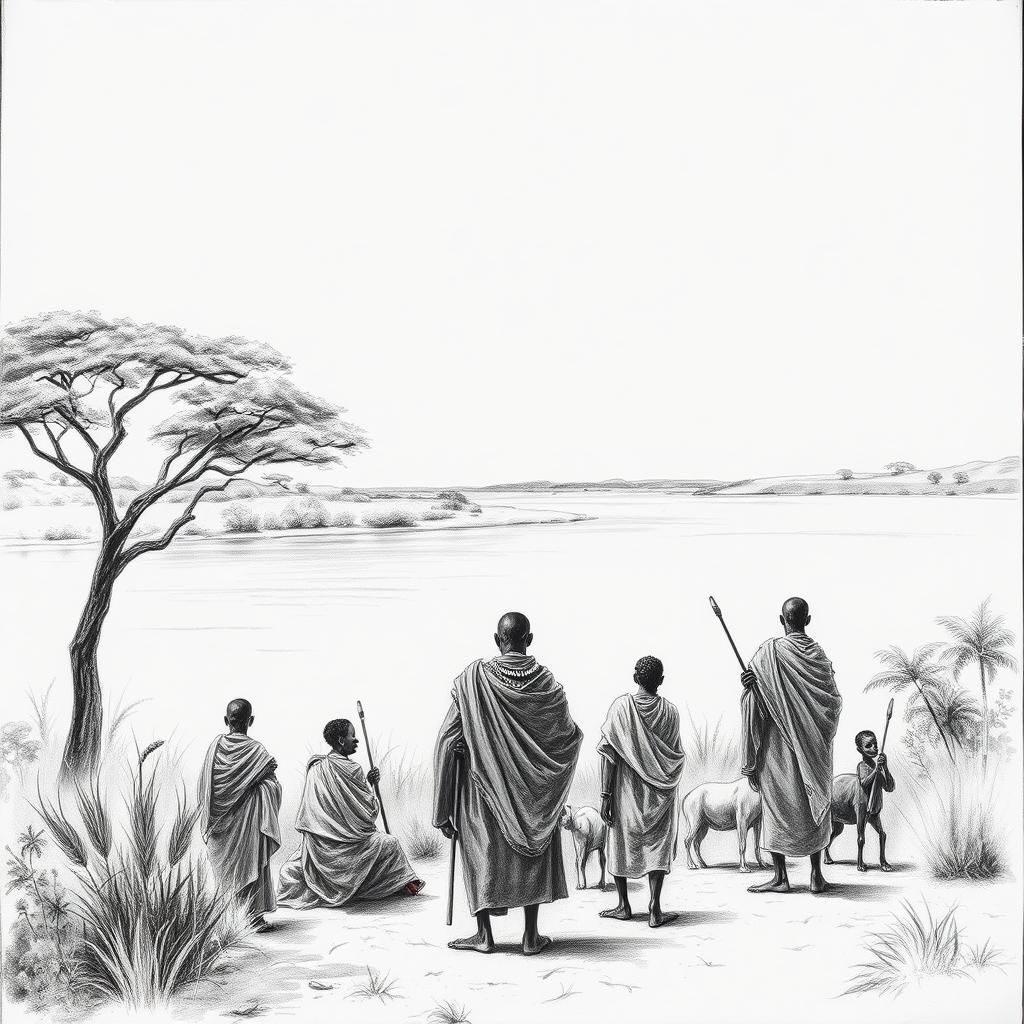
As we step back from this journey across Africa—from the endless sands of the Sahara to the snowy crown of Kilimanjaro, through bustling savannas and vibrant cities, to the tranquil waters of Lake Victoria—we see a continent bursting with life and stories. Africa is not just a place on the map; it’s a living mosaic of ecosystems, histories, and cultures that whisper ancient truths and inspire modern dreams.
This vast land teaches us about resilience—how people and nature thrive together against all odds. The Maasai’s proud traditions echo alongside the calls of elephants, while the Nile’s steady pulse reminds us of the ancient civilizations that once shaped the world. The deserts, mountains, rivers, and forests are more than scenic backdrops; they are the beating heart of Africa’s soul.
If this glimpse has stirred your curiosity, remember that Africa’s richness is best discovered with an open mind and respectful steps. There’s a deep human thread woven through every landmark and tradition—an invitation to connect, to wonder, and to carry these stories forward. So, whether you dream of chasing horizons across wild plains or tracing the paths of legendary explorers, ask questions, listen closely, and let Africa’s timeless spirit guide your way.
The story doesn’t end here. Each visit, each conversation, each shared meal adds another layer to the endless tapestry of African life. Take a moment to explore the sources shared here, and who knows? Perhaps one day soon, you’ll walk these ancient lands yourself, feeling the warm sun on your face and the weight of history beneath your feet.
Share to...
I hope you enjoy the content.
Want to receive our daily crossword puzzle or article? Subscribe!
You may also be interested in
Share to…
Want to receive our daily crossword puzzle?
-
Jigsaw Puzzles
Zodiac Ink Art Puzzle: The Playful Monkey 250 | 300 | 500 Pieces
kr 348,00 – kr 439,00Price range: kr 348,00 through kr 439,00 Select options This product has multiple variants. The options may be chosen on the product page -
Jigsaw Puzzles
Oslo Opera House Abstract Jigsaw Puzzle 250 | 300 | 500 Pieces
kr 348,00 – kr 439,00Price range: kr 348,00 through kr 439,00 Select options This product has multiple variants. The options may be chosen on the product page -
Jigsaw Puzzles
Cozy Art Nouveau Cat Puzzle 250 | 300 | 500 Pieces
kr 348,00 – kr 439,00Price range: kr 348,00 through kr 439,00 Select options This product has multiple variants. The options may be chosen on the product page
